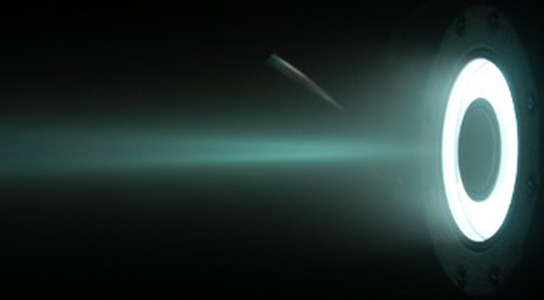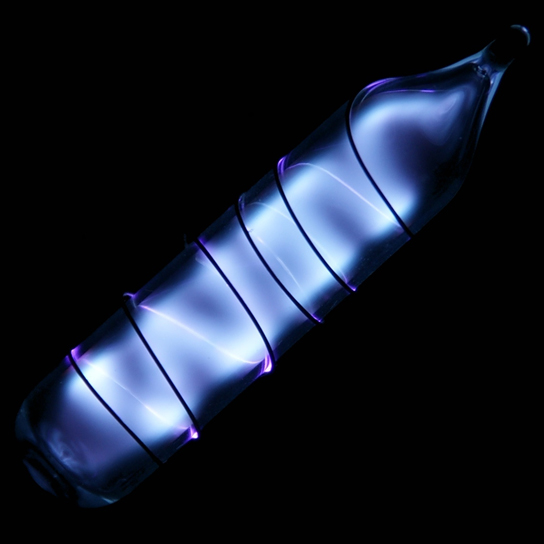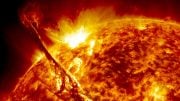
Xenon ions escaping.
Xenon, the second heaviest of the chemically inert noble gases, seems to have vanished from the Earth’s atmosphere; but German geoscientists think that they figured out where it went.
The scientists published their findings in the journal Nature. The Earth’s atmosphere contains less xenon, relative to the lighter noble gases, than meteorites similar to the rocky material that formed the planet and some scientists think that xenon is lurking in glaciers, minerals, or in the Earth’s core.

Xenon lightbulb.
Hans Keppler and Svyatoslav Shcheka, geophysicists at the University of Bayreuth in Germany, looked towards Earth’s minerals for answers. They thought that the xenon could be hiding in pockets of magnesium silicate perovskite, one of the major components of the Earth’s lower mantle.
They tried dissolving xenon and argon in perovskite at temperatures exceeding 1,600 ºC and pressures about 250,000 times those at sea level, which are conditions similar to the ones found in the lower mantle. They didn’t find xenon.
Keppler and Shcheka suggest that argon and other noble gases hid in the perovskite, but most of the xenon, which couldn’t dissolve in the mineral, dissipated into space. The ratios of three noble gases, xenon, krypton, and argon, in the atmosphere roughly correspond to their solubility in perovskite.
This could also explain why lighter isotopes of xenon are even more depleted from the atmosphere than heavier ones. Over billions of years, xenon has been seeping into space.
However, other geoscientists disagree with this theory. Chrystele Sanloup, a geoscientist at Pierre and Marie Curie University in Paris, states that “the theory does not totally explain all of the excess heavy xenon in the atmosphere, nor for additional xenon made from the radioactive decay of uranium and plutonium in rocks.”
Sanloup also believes that if this explanation works for Earth, it should also apply to Mars, where the atmosphere is also missing xenon. However, Sandloup doubts that Mars has enough perovskite to explain the xenon in its atmosphere.
Reference: “The origin of the terrestrial noble-gas signature” by Svyatoslav S. Shcheka and Hans Keppler, 10 October 2012, Nature.
DOI: 10.1038/nature11506









Be the first to comment on "Xenon Gas Has Almost Vanished From the Atmosphere"